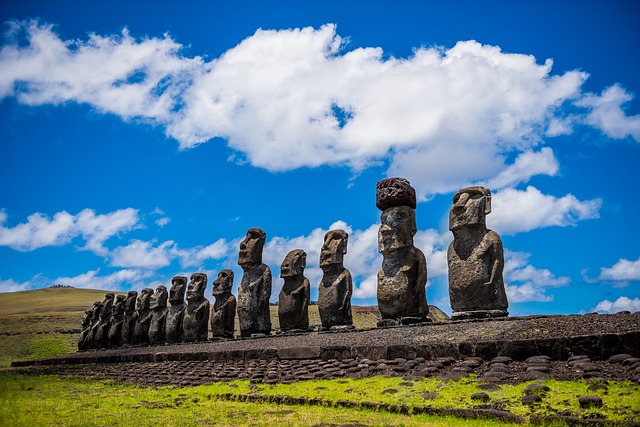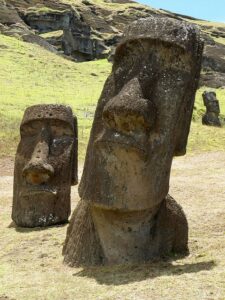EXOTIC ISLAND
JANUARY 16, 2022
21 Mystery Facts Of Easter Island

These are the 21 mystery facts of Easter Island, a beautiful exotic island in Polynesia with many giant statues lying around.
- The Easter Island is located at the southeastern Pacific Ocean, 3.512 kilometers away from Chile and it is located in Polynesia.
- Geographically Easter island is part of the continent of Oceania but politically it belongs to South America.
- In December 1862, Peruvian slave raiders struck Easter Island, killing around 1500 men and women – half of the island’s population. The island was annexed by Chile on September 9, 1888 by Policarpo Toro.
- Government of Chile signed with the Rapa Nui people as it wrote down on the “Treaty of Annexation of the island” ((Tratado de Anexión de la isla)
- The first known European visitor to Easter Island was Jacob Roggeveen, a Dutch explorer that arrived in 1722.
- Roggeveen named the island Paaseiland (Easter Island) in memory of the day they arrived there.
- The small island is inhabited by the Rapa Nui people (Great Rapa) or Te Pito te Henua (“Navel of the World”). Their ancestors built the famous giant stone statues around 1250-1500 AD.
- “Moai” refers to any of the gigantic stone figures found on Easter Island, the word originates from Rapanui (the Polynesian language of Easter Island) which means : “statue” or “figure”.
- Those Moai large stone statues weighed 20 tons in average and measured 4 meters high and the human heads on torsos carved in the male form from rough hardened volcanic ash.
- When Roggeveen first discovered the island all the Moai statues were still stood proudly upright.
- The Moai statues have puzzled ethnographers, archaeologists and visitors since the island was discovered. The question is why did the early Easter Islanders built those colossal statues.
- A story tells that the people who built the Moai believed they were the only humans in the world. So any invaders or bad people that would be coming would have to come from within the island itself. This was the reason why Moai face inwards to protect the community.
- The religion practice in the island today is called Ivi Atua, it is based on the immortality of the soul. It states that the spirit of the ancestors comes to help their heirs or relatives if they need it.
- The statues were made using basalt stone picks, and carved from the solidified volcanic ash of Rano Raraku volcano.
- The base of the statues are buried in the ground, a symbol of an idea of fertility central. In the Rapanui belief, their presence here stimulated agricultural food production.
- The carvings are created in one piece with average weight of 20 tons and measuring 20 feet tall or more. One unfinished statue is 69 feet tall with estimated 270 tons in weight.
- The largest of these is “El Gigante” which stands some 72 feet tall located near the Rano Raraku Quarry.
- About 5.000 people (many of them are native Rapa Nui) live on the island today. Around 40.000 tourists visit the island every year in average.
- In 1995, UNESCO named Easter Island a World Heritage Site, they protect much of the island within Rapa Nui National Park.
- Easter island was once covered with palm trees for over 30.000 years but is treeless today. Evidence shows that the trees mainly disappeared between 1200 and 1650.
- Some travelers say that the people of the island are closed to foreigners and difficult to get residents talk to visitors. But the guides are very welcoming and really happy to talk when we show interest in the Rapa Nui cultures.

related post